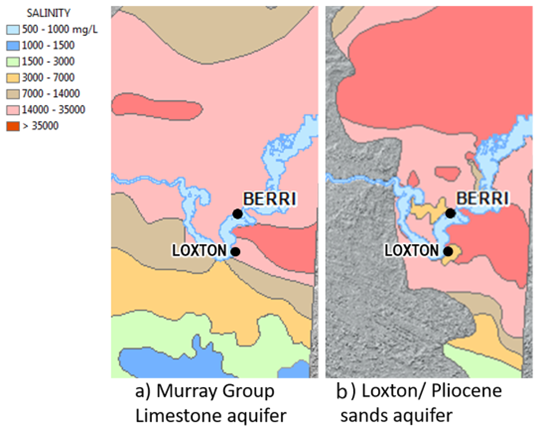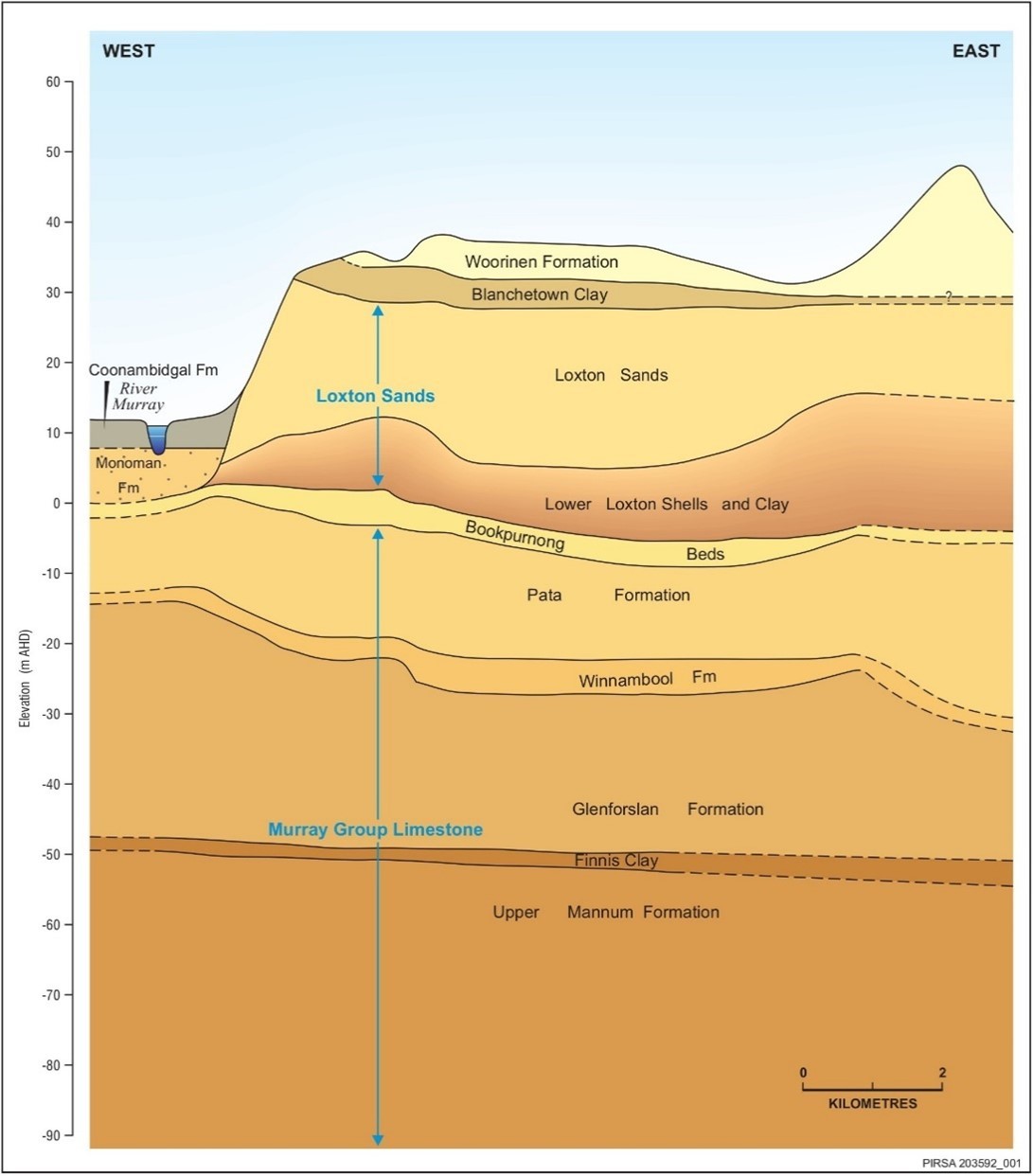Explainer: Hydrogeology of the Loxton area
news
Published 06 Aug 2024
Within South Australia, the Riverland is one of the most agriculturally productive and ecologically diverse regions. The Loxton/Berri area contains three aquifers: (1) the Loxton/Pliocene Sands, (2) the Murray Group Limestone, and (3) the Renmark Group. The Loxton/Pliocene Sands and Murray Group Limestone aquifers offer the potential for sustainable extraction of brackish groundwater and discharge of desalination brine, based on their stable hydrogeological properties. The formation of these aquifers, including layering and relative depths is shown in the figure below.

Within the Loxton/Berri region, the Murray Group Limestone aquifer and Loxton Sands aquifer can facilitate the extraction and reinjection of water, as they are separated by the Bookpurnong beds. This layer is sufficiently thick and impermeable to prevent connectively between the aquifers, hence avoiding adverse environmental effects like salt mobilisation or a reduction in water quality. Based on the thickness of the formations, it is anticipated the Loxton Sands aquifer and Murray Group Limestone aquifer can be accessed from a bore 1 to 30 m deep and a bore 60 to 160 m deep, respectively.
The following figure shows that within the Loxton/Berri region, the lower Murray Group Limestone aquifer is less saline than the upper Loxton/Pliocene sands aquifer. This difference provides the possibility of aquifer reinjection of brine. The Murray Group Limestone aquifer is to be used for extraction (and desalination), with reinjection into the more saline Loxton/Pliocene Sands aquifer. The desalination process concentrates salt in the liquid brine stream. To avoid environmental degradation, brine injection must occur into an aquifer that has a salinity equal to or greater than that of the brine.

Managing desalination brine via aquifer discharge has the potential to lower some of the costs associated with brackish groundwater desalination, and thereby increasing its cost competitiveness with other water sources. The Century Orchards demonstration site aims to demystify aquifer disposal of brine, and to highlight the opportunity for desalination in the Murray-Darling Basin.
Latest news & events
All news & eventsWebinar recording: Working With Country To Heal
Read MoreBuilding capacity for Basin communities to respond to variable water futures
Read MoreDelivering the Commonwealth Environmental Water Holder’s (CEWH) Flow-MER 2025 Annual Forum
Read MoreMurray Darling Association 2025 National Conference: Griffith drives Basin-wide water collaboration
Read More